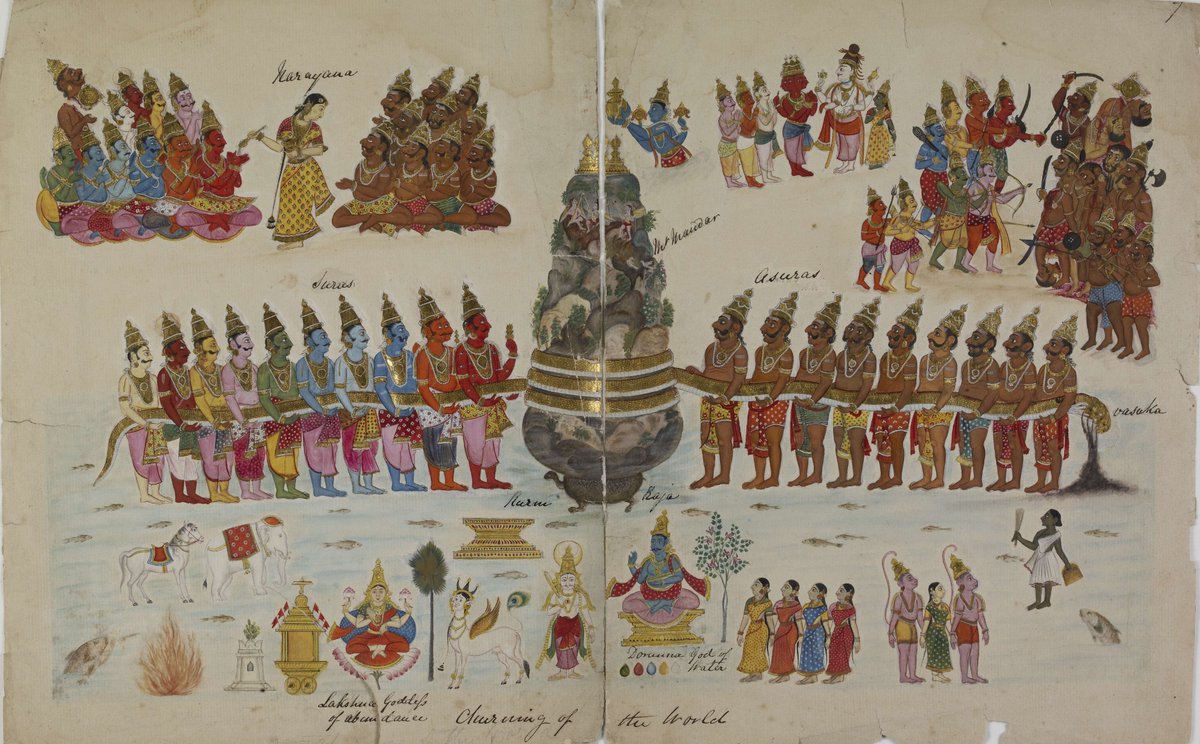
This Thread for all Ear Ornament lovers
#TamilNadu ear ornaments are generally of 22-karat gold. Goldsmiths there have developed an elaborate ear-ornament tradition, which often necessitates piercing the ear at several locations and distending the hole mode in the earlobe
1/12
#TamilNadu ear ornaments are generally of 22-karat gold. Goldsmiths there have developed an elaborate ear-ornament tradition, which often necessitates piercing the ear at several locations and distending the hole mode in the earlobe
1/12

to accom modate them. The attention to detail evident in these ornaments, some of which are very small, illustrates the local goldsmith's outstanding skill
These drawings have been culled from thirty of the many volumes of Village Survey Monographs,published in connection
2/12
These drawings have been culled from thirty of the many volumes of Village Survey Monographs,published in connection
2/12
with the Census of India, 1961, Madras (Tamil Nadu),60, part 45, 1963, in which, among other subjects, the traditional jewelry worn by women and men in each of the villages studied is discussed and illustrated. Ear ornaments have been arranged in horizontal rows by concepts.
3/12
3/12
from simple to complex. In the caption, the village of origin appears first, followed (from left to right) by their Tamil vernacular names Unless designated otherwise, they are all worn by Hindu women.
4/12
4/12
Row 1
1. Pappanaickenpatti: kammal
2. Thadagam olai thodu, or katholai (with attached ring called kundolai)
3. Kadambangudi kadukkan
4. Aladipatti: kaddukkan
5. Thiruvellari: kaddukkan
5/12
1. Pappanaickenpatti: kammal
2. Thadagam olai thodu, or katholai (with attached ring called kundolai)
3. Kadambangudi kadukkan
4. Aladipatti: kaddukkan
5. Thiruvellari: kaddukkan
5/12

Row 2
1. Athangarai: thattu (Muslim)
2. Kottumangalam: visala murugu
3. Ariyur: koppu (stick); thattu; kammal
4. Pappanaickenpatti: koppu (top); kammal (lobe)
5. Athangarai: koppu, thodu (Muslim)
6/12
1. Athangarai: thattu (Muslim)
2. Kottumangalam: visala murugu
3. Ariyur: koppu (stick); thattu; kammal
4. Pappanaickenpatti: koppu (top); kammal (lobe)
5. Athangarai: koppu, thodu (Muslim)
6/12

Row 3
1. Sirumalai: koppu (top); thattu (middle), clover thattu; kammal (lobe)
2. Thiruvellari koppu; lolakku (stud with pendant); thallukku (stud), kammal
3. Thadagam: koppu (top); visalamurugu (left); pottu (right)
4. Villangulam: koppu; "S" thattu (left); plain thattu;
7/12
1. Sirumalai: koppu (top); thattu (middle), clover thattu; kammal (lobe)
2. Thiruvellari koppu; lolakku (stud with pendant); thallukku (stud), kammal
3. Thadagam: koppu (top); visalamurugu (left); pottu (right)
4. Villangulam: koppu; "S" thattu (left); plain thattu;
7/12

clover thattu, kammal
5. Visavanoor: kathuvala (set of twelve rings, Muslim), kammal
Row 4
1. Arkavadi: thattu (left); mattal with kammal, lolakku (pendant); talukku (two types)
2. Aladipatti koppu (top); kurungathu thalukku (bird); mattal (strip); clover thalukku; kammal
8/12
5. Visavanoor: kathuvala (set of twelve rings, Muslim), kammal
Row 4
1. Arkavadi: thattu (left); mattal with kammal, lolakku (pendant); talukku (two types)
2. Aladipatti koppu (top); kurungathu thalukku (bird); mattal (strip); clover thalukku; kammal
8/12

3. Vilangulam: mattal: kammal: thongattam (hanging bell)
4. Thadagam: visalamurugu (left); mattal; thodu (lobe stud); and jimikki (bell)
5. Kadakkara: mattal, kammal-jimikki
9/12
4. Thadagam: visalamurugu (left); mattal; thodu (lobe stud); and jimikki (bell)
5. Kadakkara: mattal, kammal-jimikki
9/12
Row 5
1. Kadambangudi thongattam or thodu
2. Kodathuchery: kammal jimikki
3. Ravanasamudram: kathuvalli (set of twelve rings, Muslim)
4. Athangarai: urukkumani
5. Aladipatti: ananthamudichur
10/12
1. Kadambangudi thongattam or thodu
2. Kodathuchery: kammal jimikki
3. Ravanasamudram: kathuvalli (set of twelve rings, Muslim)
4. Athangarai: urukkumani
5. Aladipatti: ananthamudichur
10/12

Row 6
1. Visavanoor: koppu, onnappu-thattu (small stud)
2. Kanakagiri: thanduvetti
3. Kanakagiri: ananthamudichu
4. Iswaramoorthypalayam thanduvatti
5. Iswaramoorthypalayam: koppu; visirimurugu; ananthamudichul
11/12
1. Visavanoor: koppu, onnappu-thattu (small stud)
2. Kanakagiri: thanduvetti
3. Kanakagiri: ananthamudichu
4. Iswaramoorthypalayam thanduvatti
5. Iswaramoorthypalayam: koppu; visirimurugu; ananthamudichul
11/12

Row 7
1. Villangulam: koppu, thattu, puchikudu
2. Kurumangalam: assorted
3. Ravanasamudram: pampadam
4. Kottuthal Azhamkulam murichi (top stud); lollakku; thallukku, thandatti
5. Kottuthal Azhamkulam pampadam; ananthamudichu
12/12
1. Villangulam: koppu, thattu, puchikudu
2. Kurumangalam: assorted
3. Ravanasamudram: pampadam
4. Kottuthal Azhamkulam murichi (top stud); lollakku; thallukku, thandatti
5. Kottuthal Azhamkulam pampadam; ananthamudichu
12/12

• • •
Missing some Tweet in this thread? You can try to
force a refresh



















